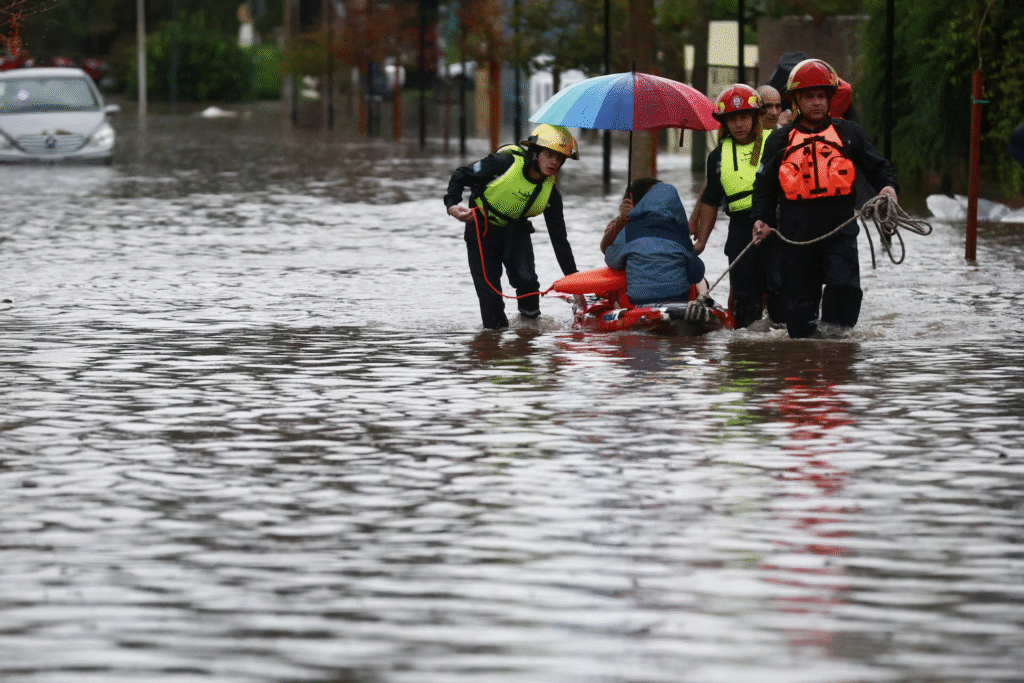Indonesian Gold Mine Landslide Halts Search; Many Still Missing
On Friday, a landslide hit a gold mine in the Arfak mountains of Papua, Indonesia. Strong rains caused the disaster, trapping miners inside shelters. The Indonesian disaster team and rescuers stopped searching for 14 missing workers on Monday but will resume efforts on Tuesday. Six people died and four were hurt. Bad roads and weather blocked rescue missions, and reaching the site from town takes 12 hours. Mining accidents are common in these remote parts.
Small-scale or illegal mines were blamed for similar tragedies last year, with 15 deaths in West Sumatra and 23 more in Sulawesi. A recent report found 104 mining accidents between 2013 and 2021 in Indonesia, showing the dangers.
Chinese-invested nickel plants also saw 77 deaths and 120 injuries since 2016. Experts and the public say tougher rules are needed so fewer people face risks. Clearly, safer mines could help protect the lives of all workers.
Mining disasters deeply affect families and whole communities. A strong focus on safety and clear rules is needed to stop future tragedy and help miners return home safe.
For the complete story and full context, please refer to the original article from reuters.com.
Deadly Tornadoes Hit Kentucky, Missouri, and Virginia With Major Damage
Severe tornadoes and storms struck the Midwest and Ohio River Valley, causing at least 25 deaths in Kentucky and Missouri. Kentucky’s Governor and Missouri’s leaders declared emergencies. In Laurel County, Kentucky, a strong EF5 tornado destroyed homes and hurt many. St. Louis, Missouri, saw 5,000 properties damaged as storms hit during rush hour, with 38 people injured and city services interrupted.

Storms happened overnight before May 17, 2024, and continued into Friday. Virginia also lost lives after trees fell on cars. Emergency crews helped, and Homeland Security promised federal aid. The National Weather Service counted several tornadoes and heavy rain causing more trouble for the region.
People faced major losses. Hundreds of Kentucky homes and 5,000 Missouri buildings were damaged. Insurance claims went up to 3,500 in Missouri and 950 in Kentucky, while experts predicted $5 billion in costs.
The weather left towns struggling, but strong support continues. Families are getting basic needs, emergency workers are acting fast, and help is coming from everywhere. Recovery will take time, but they won’t face it alone.
For the complete story and full context, please refer to the original article from reuters.com.
Strong Rains Hit Southern China, Causing Deaths and New Warnings
In southern China’s Guangdong and Guangxi provinces, heavy rains brought trouble over the weekend. Five lives were lost, with several still missing. The weather office gave out yellow warnings for mountain floods and other disasters, a serious sign in China’s four-level alert system. Much of southern China, including Jiangxi, Zhejiang, Fujian, plus Xinjiang in the northwest, faced rain from Sunday to Monday, and more is expected until Tuesday.
Experts say this is due to warm weather in 2023 and 2024 that makes storms stronger. Temperature records show that 2024 is the hottest year since record-keeping began over sixty years ago. These changes have led to stronger storms, higher rain, and more use of energy in many homes.
Studies show rainstorms in Guangdong rose ten times since 1990. From 2010-2023, dangerous precipitation made up 27% of China’s top weather events. Guangzhou had its wettest April in 65 years this year, showing that weather patterns are really changing. People worry that such events could become more common, making life in these areas harder.
Extreme weather events like these remind us how important it is to stay ready and adapt. Stronger storms can seriously affect families. Safety efforts must improve quickly.
For the complete story and full context, please refer to the original article from reuters.com.
Mount Lewotobi Laki-laki Erupts Eight Times, Highest Alert Issued in Indonesia
Mount Lewotobi Laki-laki erupted eight times over the weekend on Flores island in Indonesia. The country’s volcanology agency raised the danger level to its highest because of strong volcanic activity. On Sunday, ash clouds went up 3 to 5.5 kilometers, while Monday saw a height of 1.2 kilometers. People heard loud rumbles from the volcano’s monitoring posts.

Authorities told everyone to avoid a six-kilometer zone around the volcano. Heavy rain could cause cold lava flows—dangerous fast-moving mud. No flights or evacuations have happened yet; earlier eruptions did cause damage.
Reports say the volcano had 110 eruptions in April 2025. In March, ash reached 16.2 kilometers high. Another eruption in November 2024 sent plumes to 17 km, showing big volcanic power.
Indonesia sits on the Ring of Fire, so volcanoes erupt often. People living there must always stay alert and follow safety rules to avoid harm.
For the complete story and full context, please refer to the original article from usnews.com.
Severe Flooding in Northern Buenos Aires Halts Soybean Harvesting
On Saturday, heavy rains hit the north of Buenos Aires province. More than a thousand people had to leave their homes because floods covered streets, and some families used boats to rescue belongings. In Zarate, Francisco Ratto, the local mayor, coordinated the response as floodwaters trapped a bus on Route 9.

The National Meteorological Service sent a red alert Friday night. Rainfall between 150 to 260mm caused the disaster. San Antonio de Areco had the most rain. These storms are slowing farm work; the region is famous for soybeans and wheat exports.
Reports explain that soybean harvest is now 4 points behind the normal pace, raising fears about quality and crop loss. Some farms could lose up to 90% of second-crop soybeans, which makes the situation worse for exporters.
Argentina’s people and farmers face tough days ahead. Floods hurt local lives and affect food supplies everywhere since this region exports a lot of soy and corn worldwide.
These historic floods show nature’s power. As crops struggle and homes flood, many wonder how the area will recover. Teamwork and support will be needed to rebuild lives and farms.
For the complete story and full context, please refer to the original article from reuters.com.











